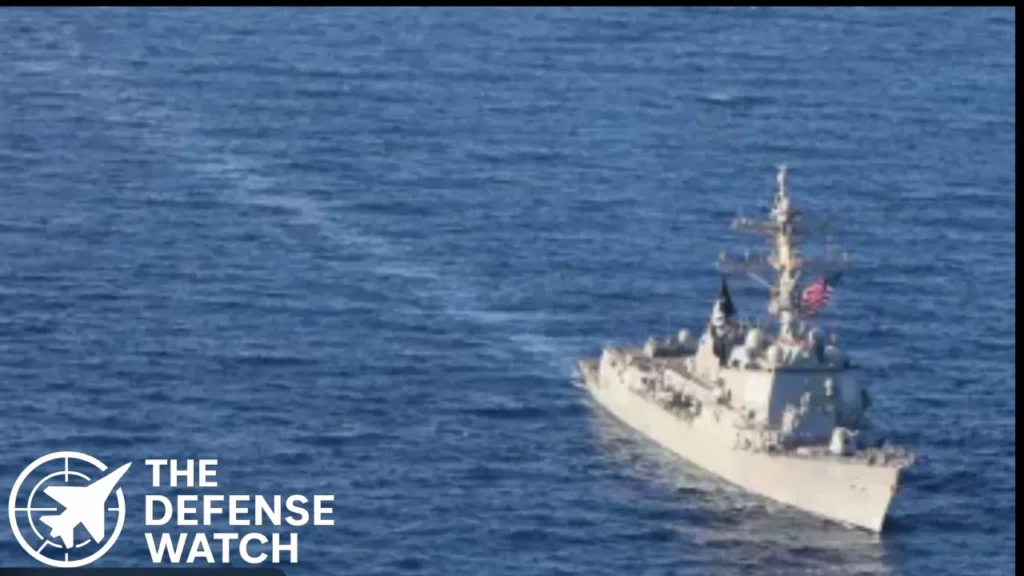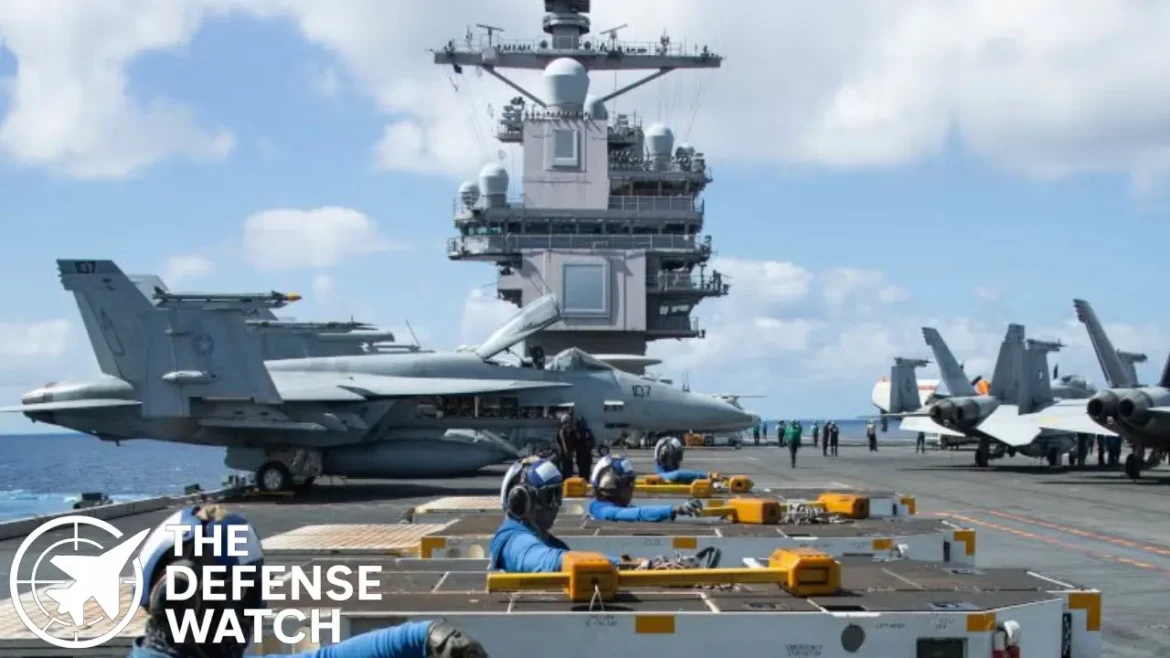What the Announcement Entails
The USS Gerald R. Ford (CVN-78) carrier strike group is being ordered to the operational area of the U.S. Southern Command (SOUTHCOM) in the Caribbean/South American region. According to Pentagon spokesperson Sean Parnell, the deployment aims to “bolster U.S. capacity to detect, monitor, and disrupt illicit actors and activities that compromise the safety and prosperity of the United States homeland and our security in the Western Hemisphere.”
The strike group will include the carrier itself, associated warships, and potentially advanced air assets. This move comes amid intensifying U.S. counter-narcotics and “narcoterrorism” operations in the region.
Key elements:
- The carrier is transiting from its previous deployment area and will join existing U.S. naval assets in the Caribbean and off the coast of South America.
- The stated mission covers detection, monitoring and disruption of illicit trafficking networks — notably those tied to the Tren de Aragua gang and other transnational criminal organisations.
- The timing coincides with recent U.S. air- and sea-strikes on suspected drug trafficking vessels in the Caribbean and eastern Pacific — at least 40 lives have been lost in those operations since early September.
Strategic Context and Regional Implications
Counter-Narcotics and the Hemisphere
The deployment takes place against the backdrop of an expanded U.S. campaign to confront what the administration describes as narco-terrorism. The U.S. has repositioned stealth fighters (F‑35) in Puerto Rico, conducted nighttime maritime strikes and asserted that criminal groups in Venezuela and neighbouring states constitute direct threats to U.S. national security.
This marks a departure from the more traditional role of U.S. law-enforcement and Coast-Guard responses in the Western hemisphere; the integration of carrier strike groups signals a far more robust military posture in the region. Wikipedia+1

Geopolitical Flashpoint: Venezuela, Colombia and Beyond
Tension with the Venezuela regime under Nicolás Maduro is escalating. U.S. officials have accused Maduro’s government of facilitating or tolerating trafficking and have even labelled gangs such as Tren de Aragua as terrorist organisations. Maduro has responded by warning of resistance and calling the U.S. build-up a threat to regional sovereignty. Meanwhile, U.S. relations with Colombia’s government have also become strained after accusations by U.S. officials that Colombian leadership has allowed cartels to flourish — triggering sanctions and diplomatic friction.
The deployment of a high-value strategic asset like the Gerald Ford serves as a signal not just to criminal networks but to regional governments that Washington is prepared to elevate the operational stakes.
U.S. Naval Capacity & Operational Significance
The Gerald R. Ford represents the U.S. Navy’s most advanced carrier platform — nuclear-powered, with a large air wing (more than 75 aircraft) and cutting-edge radars and defensive/missile systems.
Deploying such a capability to the South American/Caribbean theatre underscores two things:
- A commitment of high-end naval power to what has traditionally been a lower-intensity theatre (counter-narcotics rather than peer state conflict).
- A potential shift in how the U.S. frames threats: from narco-trafficking as law-enforcement matter, to viewing some actors as quasi-military adversaries warranting carrier-based response.
From an operations-logistics perspective, carriers are limited in number (only 11 in the U.S. inventory) and their schedules are tightly planned — moving one into a new theatre with short notice suggests a purposeful strategic signal.
Analysis — What This Means for U.S. Defense & Global Security
This deployment signals a broader trend: the U.S. treating the Western hemisphere more as a contested security space rather than a stable backyard. That has implications both for defense planning and alliance management.
For U.S. Defense Planning
- Resource trade-offs: Diverting a carrier strike group from other theatres means less availability elsewhere, potentially impacting U.S. flexibility in the Indo-Pacific or Europe.
- Doctrine shift: Using maritime strike assets in counternarcotics raises questions about legal authorities, rules of engagement and the oversight framework. Some legal scholars already question the justification of recent strikes at sea.
- Inter-agency operations: The blending of intelligence (CIA), Navy/Marine Corps, and DHS/Coast Guard functions suggests a more integrated “whole-of-government” push.
For Regional & Global Security
- Regional stability: Countries in Latin America may see this as a projection of U.S. interventionism; that could drive them into deeper ties with non-Western powers.
- Precedent for other theatres: If the U.S. uses full carrier strike groups for non-peer threats (drug trafficking), other states may interpret this as a lowered threshold for major-power involvement in lower-level conflicts.
- Message to other great-power contenders: The deployment might also serve as a demonstration to China or Russia that the U.S. retains global reach — even into the Americas — and can reposition significant naval assets rapidly.
In short: This is more than a counternarcotics move. It reflects a U.S. defense posture that is increasingly global, high-end and less constrained by traditional theatres.
Conclusion — What to Watch Next
In the coming weeks and months, key indicators will include:
- The actual arrival and mission pattern of the carrier strike group, and whether it conducts high-visibility operations or remains in deterrent posture.
- Diplomatic fallout with regional governments — alliances could be strained, and alternative security arrangements may emerge.
- Legal/political reactions within the U.S. Congress regarding authorisations for use of force and oversight of operations outside declared warzones.
- Whether this deployment marks a first step toward even broader operations, such as land-based strikes inside Venezuela or other South American states, as hinted by administration statements.
If this campaign progresses, it may mark a pivot in hemispheric defense dynamics — one in which the U.S. Navy’s carrier fleet plays an active role in the Americas, not just the Indo-Pacific or Mediterranean.


8 comments
[…] company’s civilian ventures are also growing. Spanish operator Air Nostrum Group, which previously reserved 10 Airlanders for regional passenger service, has doubled its order to […]
[…] unmanned programs in American defense history. The service envisions a fleet of AI-powered aircraft operating in tandem with human pilots to enhance lethality, survivability, and decision-making in high-threat […]
[…] Operational deployment will mark the C-390’s integration into mixed allied fleets, supporting roles such as tactical airlift, humanitarian relief, aeromedical evacuation and rapid logistics across NATO theatres. The program thus not only addresses national capability upgrades, but also advances broader alliance mobility and readiness goals. […]
[…] “hostile maneuvering actions” toward a Coast Guard cutter, was struck by precision fire from an aircraft deployed under existing counter-drug […]
[…] a strategic standpoint, the deployment of the USS Gerald R. Ford near Venezuela highlights two intersecting U.S. policy goals: counter-narcotics and […]
[…] three variants and more than a dozen international operators, the F-35 is the only 5th-generation aircraft deployed at scale […]
[…] strike group that includes squadrons of tactical aircraft and guided-missile destroyers. The strike group transited the Anegada Passage, near the British Virgin Islands, en route to its Caribbean […]
[…] allied defense observers, this incident may reinforce the value of thorough risk mitigation when deploying aircraft for public demonstrations. Lessons from this crash could influence how display teams structure […]